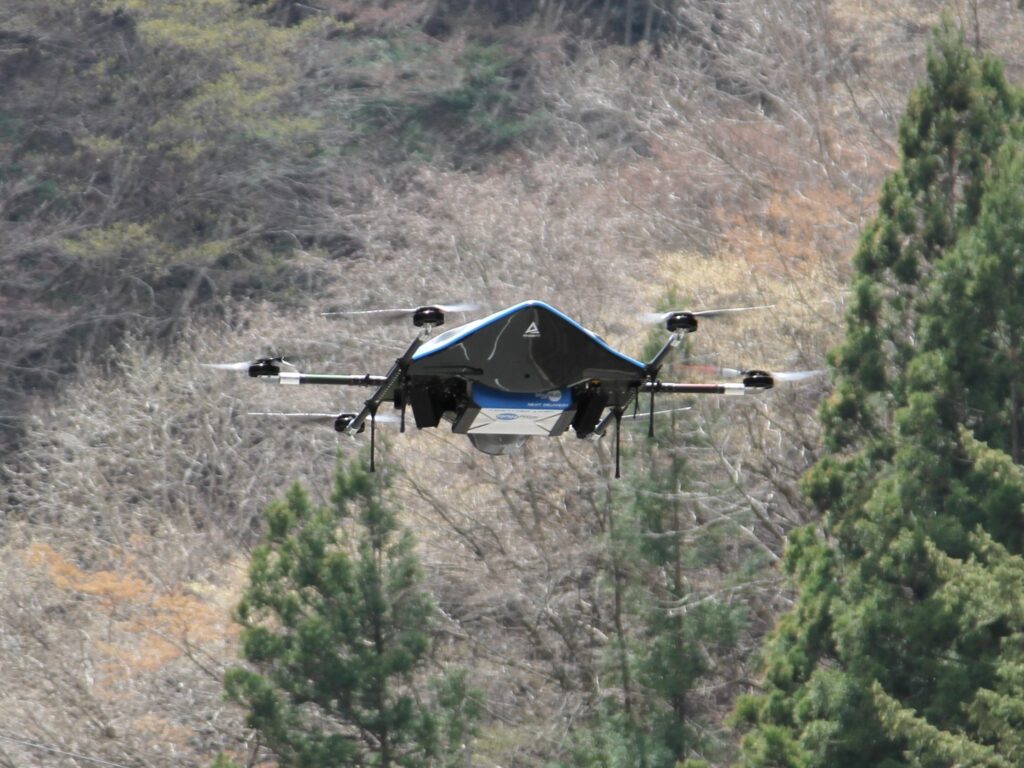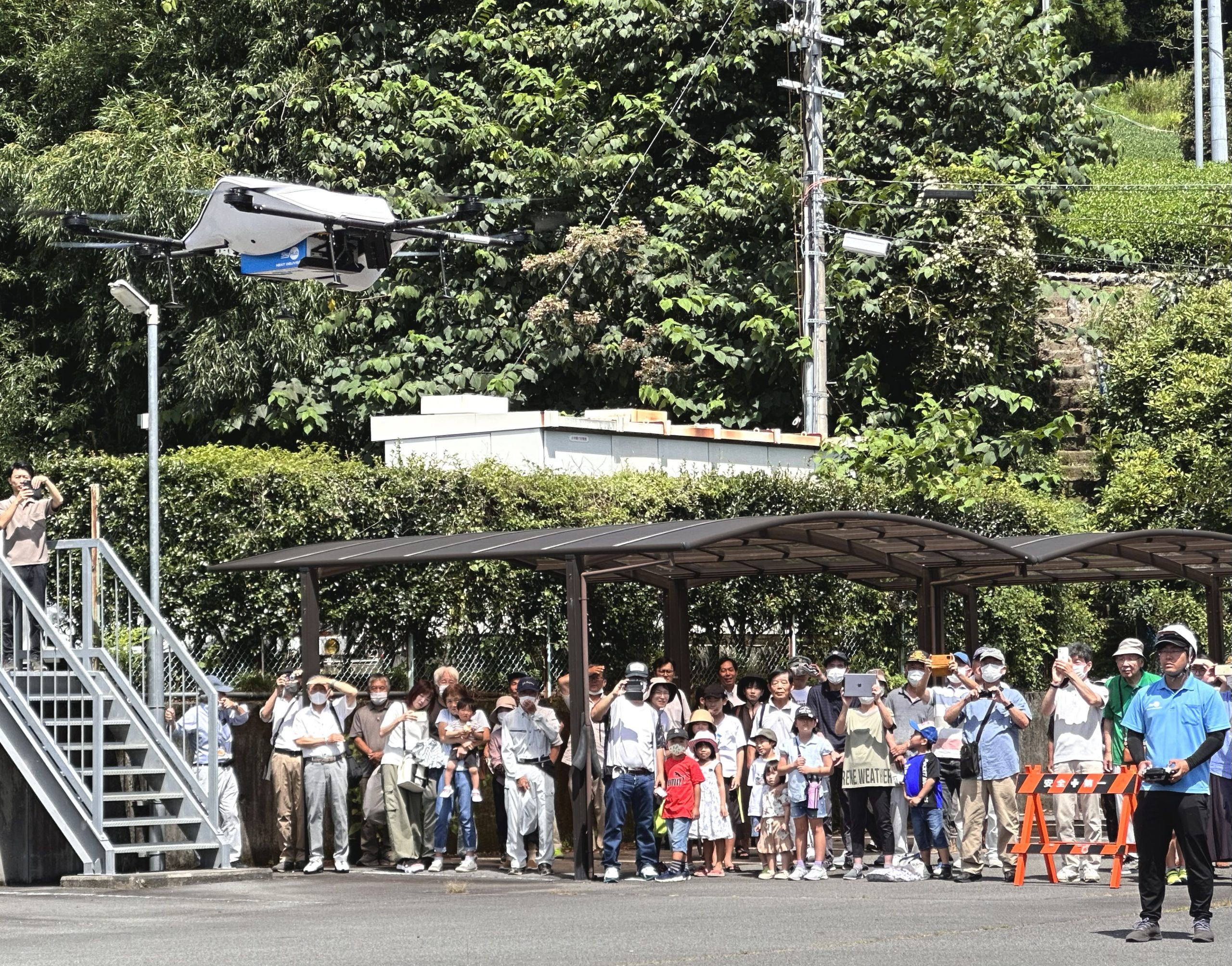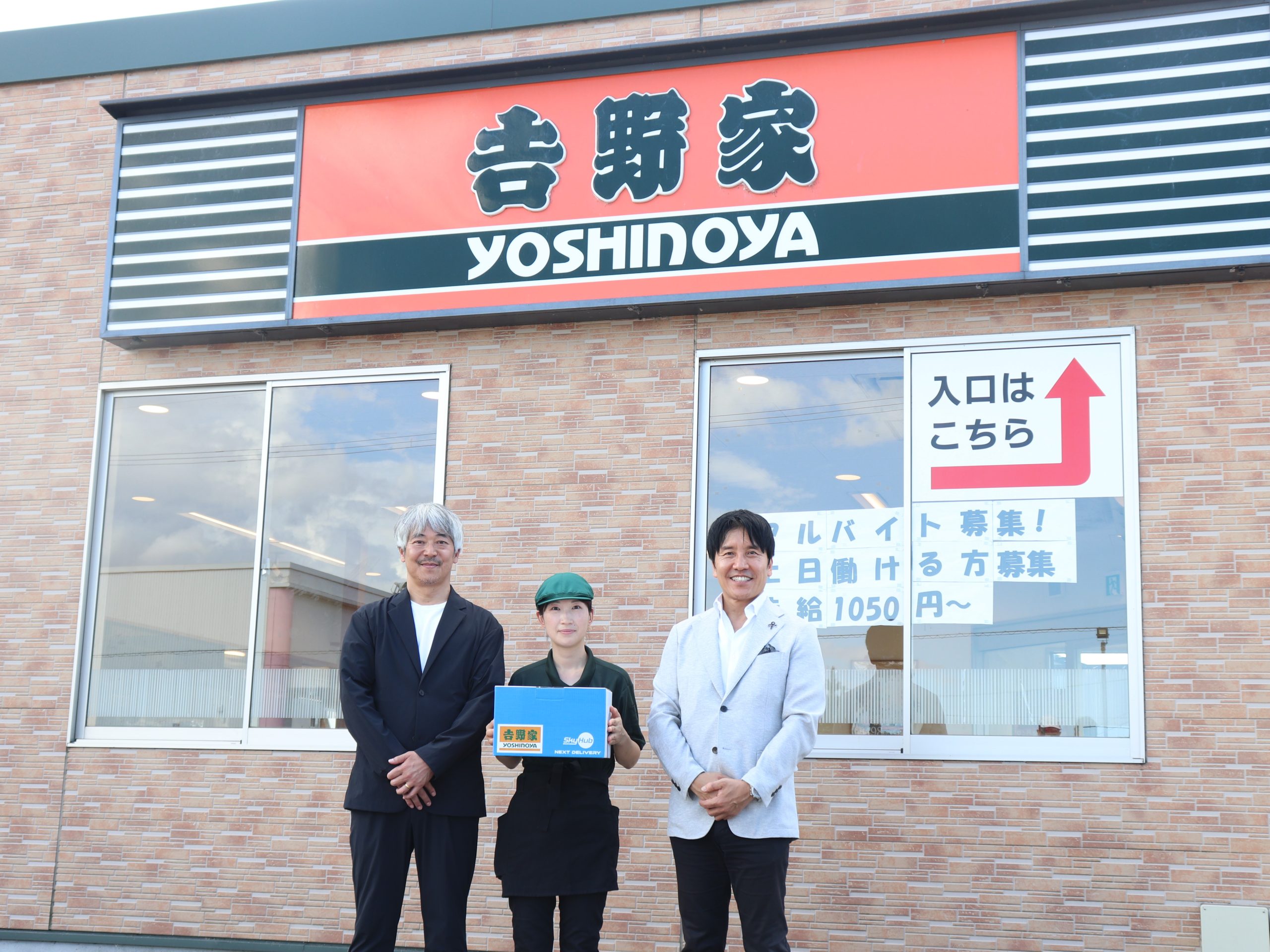

Achievements/case studies
First time ever in Japan: success demonstrating relay delivery of cow milk samples using a drone in Kamishihoro, Hokkaido. One step forward toward practical use maintaining safety and quality.

Aeronext conducted the first demonstration of delivery of bovine mammitis milk test specimens using drones in Japan, with the cooperation with Ministry of Economy, Trade and Industry Hokkaido Bureau of Economy, Trade and Industry, Innovation Challenge Executive Committee and Seino Holdings Co., Ltd., and Nobels Co., Ltd.Aeronext Inc. in October 2021.
Specifically, the demonstration looked at delivery of bovine mammitis test milk specimens using a combination of drone delivery and over land delivery, and evaluation of temperature control and vibration controls, as well as coordination between drone delivery and over land transportation. After conducting the evaluations, the results demonstrated success and there were no problems in terms of either safety or quality.
This demonstration was carried out in conjunction with the Ministry of Economy, Trade and Industry’s “Regional Industry Digitalization Support Project” (implementing agency: Hokkaido Science and Technology Promotion Center).
Please see this video for an overview of the demonstration experiment.
Demonstration Details
1.Background and Purpose
It is becoming increasingly difficult for biotech companies that carry out inspection work on individual cattle to transport samples from remote dairy production areas due to labor shortages in logistics. Current methods use traditional over ground transportation and covering distances of over 60km may take about two days raising concerns about quality maintenance. To explore new delivery methods, we conducted a demonstration experiment to investigate the possibility of using drones. If quality maintenance can be proven in delivery using drones in this experiment, the effectiveness using drones can be demonstrated, and, in the future, using drones, transportation will be possible in a shorter time than the current over land method. This experiment evaluated the delivery of bovine mastitis specimens (milk) from the viewpoint of, among other aspects, temperature changes and effects of vibration. The tests will confirm whether drone delivery would impair safety and quality.

2.Outline and Results
■ Forty-eight cow milk specimens in test tubes were mounted on Aeronext’s latest logistics drone equipped with 4D GRAVITY®*1 and flew twice for 20 minutes (about 3 km) on the premises of the Nobels Kamishihoro Headquarters. After that flight, the specimens were transferred to Seino HD trucks and delivered to the Nobels Laboratory’s Obihiro Center. The next day, the specimens were tested at the laboratory.
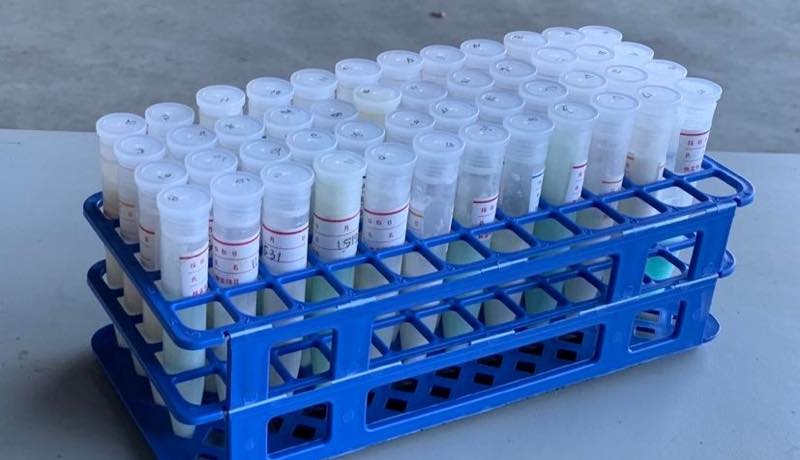
■ As a result of the demonstration, it was confirmed that the vibration during drone delivery does not affect the inspection quality after delivery. Further that means the system is fit for widespread application since the quality of the specimen is maintained so there are no negative impacts on the testing procedure. This test verifies the feasibility of implementing smart logistics in the livestock industry as a whole, which has many issues in areas such as delivery.
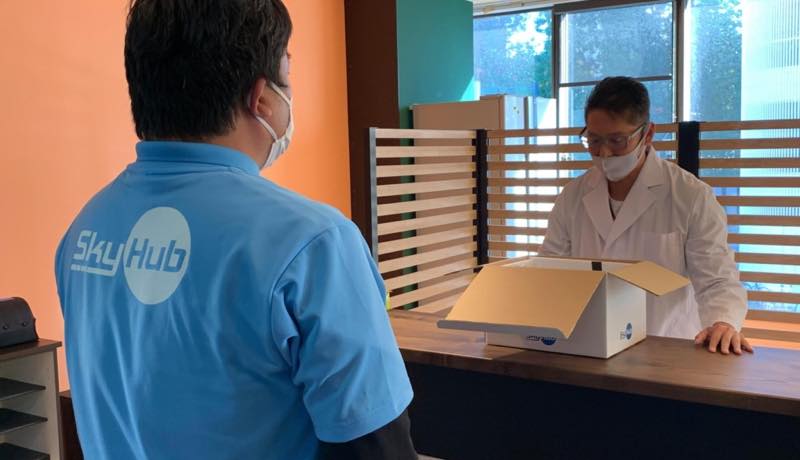
As digital transformation progresses in various fields, the livestock industry faces serious problems due to a shortage of workers, which, in turn, is due to the declining birthrate and aging population. The utilization of each technology is required to ameliorate these issues. Against this background, this demonstration represents the first series of deliveries of cattle specimens using drones in Japan. Success means that the possibilities are limited to milk samples, but to blood samples, fertilized eggs and other items that contribute to the livestock industry as a whole. This was a significant step in the societal implementation of new smart logistics, including drone delivery in general. For more practical uses in the future, we plan to continue collaborative studies while also considering demonstrations in cold climates.
In addition, the possibilities of this application and expansion are not only in the livestock industry, but also in other industries, as well.

